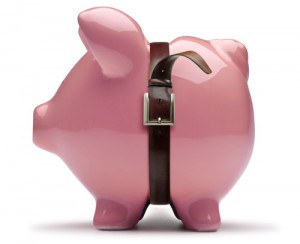August focus: Domestic Cleaning Service
How does a Small Business Owner prepare their Budget?
When you are a paid employee you are on a ‘fixed income’. Under these circumstances you would approach your personal budgeting from the angle of ‘I know that I will earn so much money this week, how am I going to distribute it?’ A small business owner’s budget is prepared from a completely different angle. You must ask yourself ‘If these are my proposed expenses, then how much income do I need to generate via my bookings so that I may meet my expenses?’
In this article I have included a Budget Planning Form to help you determine your personal overhead expenses and your projected business expenses. Complete step one to determine your total monthly personal overheads. Complete step two to determine your projected business overheads. In step three combine the totals to determine the minimum weekly sales volume necessary to ascertain your break-even point. Review example A for a copy of a complete budget planning form.
EXAMPLE ‘A’
Sunshine Carpet Cleaning Owner: John Smith
BUDGET PLANNING FORM
STEP 1 Weekly Living Expenses STEP 2 Projected Business Exp.
Rent or Mortgage Payment div. by 4.3 145 Business Savings 100
Insurance: Medical 7 Materials/ Purchases 120
House and Contents 3 Telephone/Mobile/Pager 50
Savings 40 Insurances/Superannuation 30
Food/Clothing 90 Printing/Stationary 70
Household Items 10 Car/Business Loan 100
Gas, Electricity, Water div. by 4.3 35 Truck or Car: Petrol 40
Telephone 12 Maintenance 20
Education/Entertainment 25 Insurance 20
Personal Loans/Credit Cards 61 Taxation/Accountant 120
Doctors, Dentists, Prescriptions 5 Wages: Office Help –
Holidays and Gifts 5 Field Help –
Miscellaneous 10 Office: Equipment –
Other – Rent –
Other – Miscellaneous –
Total Personal Expenses $448 Total Projected Biz Expenses $770
STEP 3
Total Personal and Projected Business Expenses $1,218
Minimum Sales Volume Required $1,300
How to Work with your Budget
Use your Budget Planning Form to establish how much you need to earn each week. Once this is done place the estimates alongside the appropriate section of your weekly budget under ALLOTTED. Set your weekly goal, and write it at the top of your form next to GOAL. You can then forward plan for up to three months ahead, forecasting and allowing for monthly, quarterly and yearly bills.
Deposit all of your earnings for the week into your Business Account. Write this amount next to BUSINESS EARNINGS DEPOSITED. Then in the BALANCE column of the BUSINESS EXPENSES half of the form move downwards, deducting the allotted amount for each section from the sub-total directly above it. When you arrive at the section marked WAGES write the amount you have drawn for your own wages on the LIVING EXPENSES form under DEPOSITED. Go through the same process for this form also.
Whenever you draw a cheque or make a payment for one of the sections listed, write down the amount paid under DRAWN. Then record the Cheque No. in the appropriately marked column, and record the date that the cheque was presented in the column marked SPENT. Most times you will actually spend the amount either paying your bill by cheque or by drawing and spending the cash amount drawn. However, there will be times when you draw the cash out but you don’t end up spending the full amount, at which point you would carry the outstanding balance forward to the following week.
Whenever you do not draw on the amount allotted to a particular bill, write the amount allotted under SAVED, and carry it forward to the next week. You will find that this column builds up over a period of time until it is time to pay the allocated bill. At this point, write your cheque, filling out the details in the first three columns and deducting the amount from the forwarded column, remembering that you will also be adding that particular week’s allotted contribution as well.
There will be times when you need to pay a bill before the amount saved covers the amount required. At this point your FORWARDED column will go into a negative balance on paper, but you bank account will stay in credit because of the money saved towards other sections on your list. It is important that you work with your budget sheets rather than your bank balance though, as they will give you structure to your saving and spending. Your budget sheets also allow you to know that you can only reward yourself for earnings over and beyond your regular commitments. You will probably find however, that once you begin to see results using this system you would rather contribute more towards your savings and investments than waste your money by spending it unproductively.
There will be times when you earn a lot more than the goal you have set yourself for the week’s takings. When this happens my suggestion is this:
- Determine the effect that your increase will have on the amount of tax you need to pay and set an appropriate amount aside for the taxman. That is, if you still work within the tax system and aren’t running a not-for-profit organisation. The rules are different if you run a not-for-profit organisation, so look into it if you can. There are lots of videos on youtube about whether or not tax is mandatory (it’s not), so check them out.
- Put half of what is left over into a savings account.
- Take the remaining amount and do something that you have always wanted to do, or buy something you have always wanted to buy. This is ‘motivation money’; it is your personal reward for being productive. Take a weekend away with that special someone in your life, buy yourself the latest CD that you like or spoil the children. This reward money will motivate you to continue your high level of performance.
You can read in next article about: Seven Principles of Prosperity
